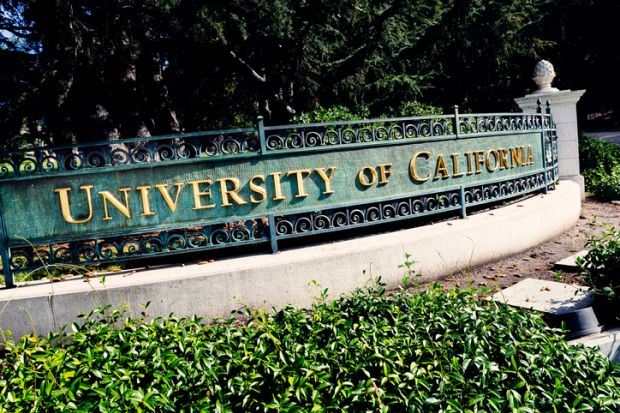After a two-year stalemate, academic publishing giant Elsevier has accepted a new contract with the University of California system that looms as a transformative advance in the global push for open-access science.
In the largest open access agreement in North America, Elsevier largely met California’s demand from 2018 to cut overall costs while putting research by California authors in free-to-read formats.
The chief mechanism in the new four-year contract is the use of author-paid fees that lets readers see articles without buying subscriptions. The agreement requires California – the producer of nearly 10 per cent of all published US academic science – to pay those fees in cases where its researchers lack the funds from their own grant awards.
Applying that practice to Elsevier’s 2,600 journals will mean that 30 per cent of all California research will be available in open-access formats, bringing the industry closer to the tipping point where subscription-based models fade away, university negotiators said.
“We’ve just taken a very big step closer” to a world in which open science is the norm, said Ivy Anderson, associate executive director of California’s digital library service and co-chair of the system’s negotiating team.
The agreement, said Elsevier’s lead negotiator, Gemma Hersh, was the result of the company “actively listening” to customer needs. It’s the latest of 15 such shared-funding arrangements, she said, following those Elsevier reached with the California State University system, Carnegie Mellon University, and groupings in the Netherlands, Norway and Sweden.
The University of California and other institutions have been striking similar arrangements with other academic publishers. California and Elsevier, however, stood out as an especially important addition, given their large sizes and the degree to which other US universities have been monitoring and learning from the negotiations.
Yet some open access advocates are worried, viewing “author pays” agreements as solidifying barriers to fully open scientific exchange rather than breaking them down.
The Elsevier-California structure should help more people read California’s scientific output, acknowledged Heather Joseph, executive director of the Scholarly Publishing and Academic Resources Coalition. But reinforcing an author-paid model may exclude less advantaged scientists, institutions and countries from global scientific exchanges, said Ms Joseph, whose group represents academic and research libraries.
“Moving to ‘Let’s just pay the same players to control science communication the same way we’ve always done it, but end up with a few more open access articles’ isn’t a good trade-off in my book,” Ms Joseph said. “And we’re not going to be able to go back and retrofit structures to be better later. That’s how we get into trouble.”
Another leading open science advocate, Brian Nosek, director of the non-profit Centre for Open Science, offered a similar assessment. “I expect that most will agree that this model is an improvement to the status quo,” Professor Nosek said, “perhaps with the risk of making it more difficult for those who wish to reinvent the system to do so.”
California officials said that their faculty and institutions were tackling the open access challenge from several directions beyond their arrangements with Elsevier and other major publishers such as Springer Nature.
Those steps including hosting internet repositories for sharing scientific discoveries, promoting open data standards to better enable that sharing, and creating new structures for open peer review, Ms Anderson said.
California’s commitment to Elsevier hit a low point in mid-2019 when the publisher – known for annual profit margins regularly exceeding 30 per cent – cut off the system’s access to its library of journals six months after its previous contract expired.
California faculty, however, largely stood behind their 10-campus system’s negotiating position, and dozens of them quit their editorial positions at some of Elsevier’s top journals pending the outcome of the talks.
In the face of that resistance, Elsevier agreed to resume negotiations with California in January 2020.
“People were inconvenienced by the end of the subscription agreement – there's no doubt about that,” Ms Anderson’s co-leader in the negotiations, Jeff MacKie-Mason, university librarian at the University of California, Berkeley, said of faculty.
“But we had very successful alternative access provisions for them, and the resounding message that came back was: ‘Don't let this last forever, but we’re willing to tolerate it because of the goals,’” he said.
The outcome means that California and its scientists will keep paying Elsevier about $13 million (£9.4 million) a year in combined subscription charges and author fees, which Mr MacKie-Mason called a saving when counting inflation.
At the same time Ms Hersh, Elsevier’s senior vice-president for global research solutions, noted that California’s payment guarantee improves the incentives for California authors to use its journals, while extending Elsevier’s string of renewed partnerships in the open science era.
“The past two years has been a pretty good journey for us from that perspective,” she said.
Register to continue
Why register?
- Registration is free and only takes a moment
- Once registered, you can read 3 articles a month
- Sign up for our newsletter
Subscribe
Or subscribe for unlimited access to:
- Unlimited access to news, views, insights & reviews
- Digital editions
- Digital access to THE’s university and college rankings analysis
Already registered or a current subscriber?








